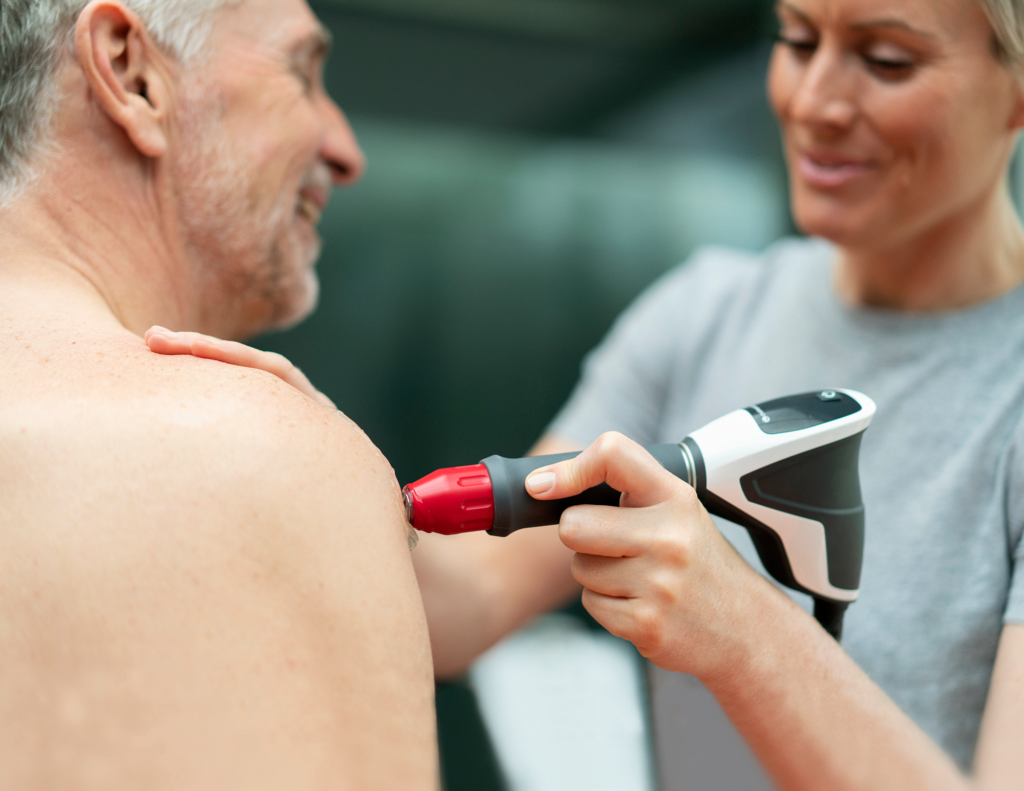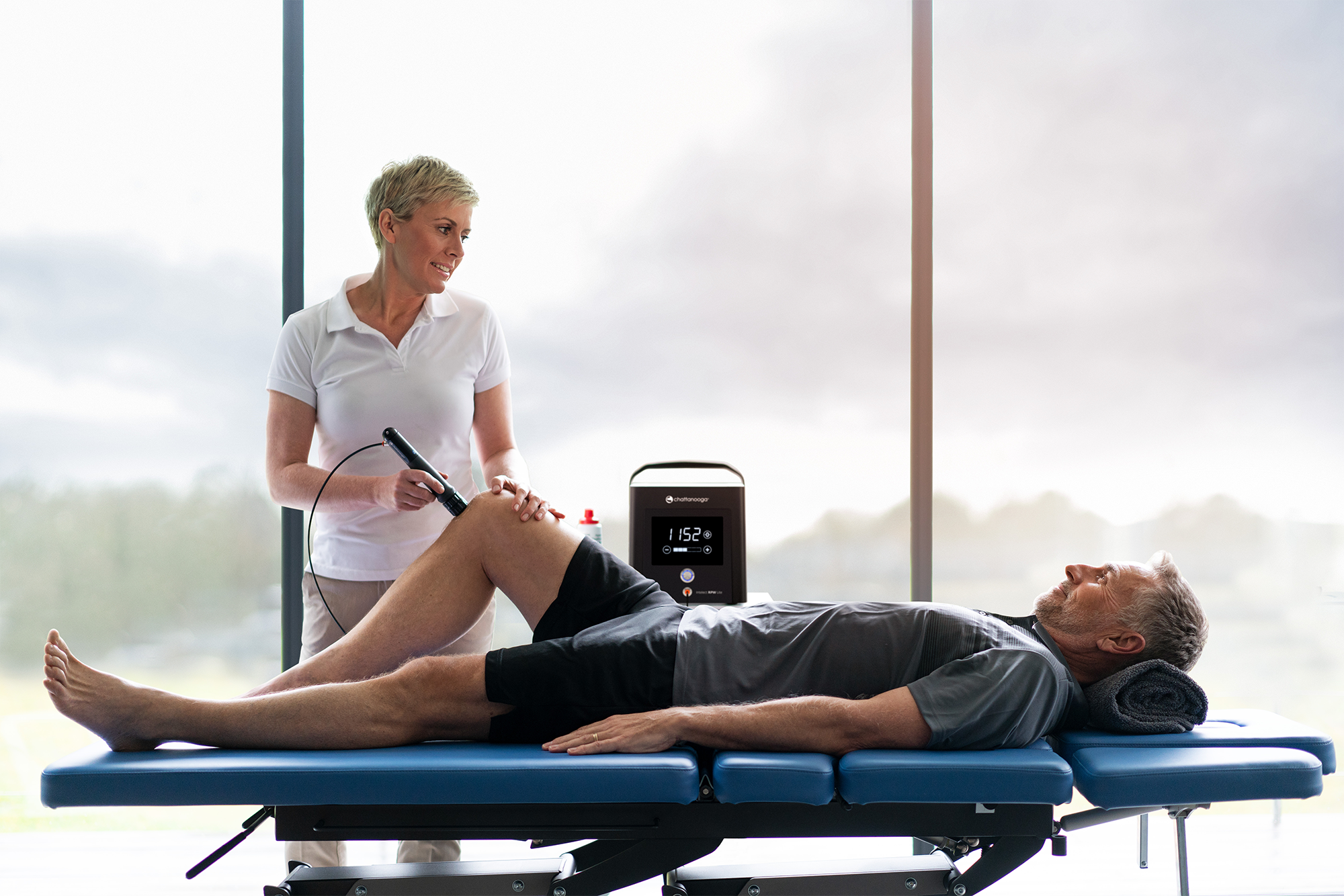Before beginning radial pressure wave (RPW) therapy, there are a number of parameters and general practices to be aware of to help achieve positive outcomes.
Commencing an RPW treatment
You should begin a radial pressure wave therapy the same way you would any other treatment session:
- Make your assessment of the patient’s condition
- Establish objective and/or subjective markers
- Educate the patient on the positive and negative aspects of the modality in order to gain informed consent
To the last point, it often helps to let the patient hear the sound of a working RPW applicator before starting treatment, as the sound can be quite loud and potentially off-putting. Just assure them the clicking they hear is only the sound of the projectile striking the transmitter, which is how the pressure waves are created.
Potential side effects of RPW therapy
It is important that the patient understands that, following RPW therapy, minor side effects may occur, usually within 1-2 days of the initial treatment. These include:
- Reddening skin – the cardinal signs of inflammation, which the therapy is intended to promote
- Swelling
- Pain
- Hematoma
- Petechiae – the appearance of small red dots on the skin. This can be substantially reduced by applying plenty of water-based transmission gel to the area before you begin treating it, as radial pressure waves travel better through water.
- Skin lesions – may occur following a previous cortisone therapy
These side effects generally abate within 5-10 days, but treatment should not be repeated until they have diminished.
Parameters for RPW treatment
Transmitters
Radial pressure waves are administered via a transmitter attached to a hand-held applicator. RPW transmitters come in different sizes, shapes, and materials, offering different profiles of wave penetration. This makes it advantageous for clinicians to have a wide range of transmitters at their disposal.
As half of the force amplitude of a pressure wave is lost in the first 10mm of penetration, it is important to know how much energy flux density (EFD) an RPW transmitter produces. Not all manufacturers provide these values, and when they do, they are usually shown as maximum bar pressure at skin level.
Also, not all manufacturers’ RPW transmitters are created equal; due to differences in quality, some transmitters are capable of providing better EFD than others.
Radial pressure waves are administered via a transmitter attached to a hand-held applicator. RPW transmitters come in different sizes, shapes, and materials, offering different profiles of wave penetration. This makes it advantageous for clinicians to have a wide range of transmitters at their disposal.
As half of the force amplitude of a pressure wave is lost in the first 10mm of penetration, it is important to know how much energy flux density (EFD) an RPW transmitter produces. Not all manufacturers provide these values, and when they do, they are usually shown as maximum bar pressure at skin level.
Also, not all manufacturers’ RPW transmitters are created equal; due to differences in quality, some transmitters are capable of providing better EFD than others.
Dosage
Clinical research on RPW in plantar fasciitis has shown that the higher the energy values used during a treatment, the fewer the number of treatments required, and the better the outcome in chronic conditions.1 However, the higher the EFD, the less the patient is likely to be able to tolerate the associated discomfort. Therefore it is important to begin treatment at a low energy value, before gradually increasing to the maximum level that the patient can tolerate. As always, observation and communication are key.
In their systematic review on shock wave therapy, Schmitz et al. (2015) state that the most effective parameters for treating individual pathologies have yet to be determined. The current ‘optimal’ protocol across all conditions appears to be 2,000 shocks applied once a week at the maximum tolerable intensity.
Frequencies
Thanks to the adjustable frequency controls on RPW devices, pulses can be administered at different rates. Higher frequencies result in shorter treatment times and have been reported in anecdotal clinical evidence to be more tolerable.
General guidelines and tips
- Once you’ve localized the painful areas you plan to treat, it can be helpful to mark these with a felt pen.
- Some applicators can be heavy to hold, so it’s important to find a comfortable grip that can be maintained for the duration of the treatment.
- Make sure to apply a generous amount of transmission gel to the skin overlying the treatment area, as this will help the pressure waves propagate into the tissue.
- While application techniques are dictated by indication, small circular movements can be used to treat the most painful spots.
- During tendon treatment, it can be beneficial to keep the tendon in a slight stretch.
- Perform post-treatment assessments to see if there is a decrease in pain, and better function.
For a full list of indications, contraindications, precautions, and warnings, refer to the user manual of your RPW device.
References
- Malliaropoulos N, Crate G, Meke M, Korakakis V, Nauck T, Lohrer H, Padhiar N. Success and Recurrence Rate after Radial Extracorporeal Shock Wave Therapy for Plantar Fasciopathy: A Retrospective Study. Biomed Res Int. 2016;2016:9415827.
- Schmitz C, Császár NB, Milz S, Schieker M, Maffulli N, Rompe JD, Furia JP. Efficacy and safety of extracorporeal shock wave therapy for orthopedic conditions: a systematic review on studies listed in the PEDro database. Br Med Bull. 2015;116(1):115-38.










